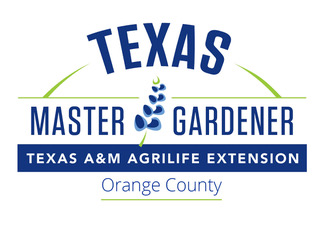Master Gardeners: Fall is Satsuma time in Orange County
Published 1:03 am Saturday, October 31, 2020
|
Getting your Trinity Audio player ready...
|
By Sheri Bethard
Orange County Master Gardeners
Driving around Orange County, you have probably noticed the Orange and Satsuma trees with their yellow/orange fruits ripening on trees. After going thru many different names since it’s inception, Orange was finally settled on because of the native orange groves that attracted the attention of boatmen as they navigated the Sabine River.
Trending
The original orange groves have been lost to history and the earth, but one thing that is not lost is our love for growing citrus trees here. Satsumas, tangerines, clementine’s, Halos, Cuties, etc. are all types of mandarin oranges (Citrus unshiu). They are flat on the bottom, not round like other Orange varieties. Being the sweetest citrus, the are also easy to peel.
Since satsumas are the most cold-tolerant of the sweet citrus. In 1994, Texas A&M AgriLife Extension Services started field trials to determine the most cold-tolerant citrus to be promoted in the Texas Superstar program. After testing, the two which stood out were ‘Miho’ and ‘Seto’ which were added to the Superstar program in 2010.
With continued testing two new varieties were developed – ‘Orange Frost’ and ‘Arctic Frost’, both being added to the Texas Superstar program in 2014 and 2015, respectfully. Each produces high quality fruit with very few seeds and are extra cold-hardy.
Satsumas must be protected the first couple of years until well established. It does not matter if you plant in the ground or a container. If grown in the ground, place a piece of PVC pipe around the base of the tree protecting from weed trimmers. For protection during the winter, build a temporary frame from PVC pipe to “house” the tree and cover with clear polyethylene. Until established, they should be protected if temperatures are expected to fall to 25°F or lower. Once established, 3 years growing, they should be able to handle temperatures down to 20°F.
At the onset of cold weather, trees planted in the ground should have a bank of mulch /soil up and around the trunk of the tree. This will help protect the trunk if the main stem happens to die back during severe cold snaps. If you have a grafted tree such as ‘Miho’, ‘Owari’, ‘XIE’ or ‘Miyagawa’, the bank of mulch/soil should extend above the graft union to protect the scion. ‘Orange’ and ‘Arctic Frost’ satsumas are typically grown from cuttings or seeds and are on their own root stock.
You can grow your tree in a large pot, at least 24 inches wide by 18 inches tall or a #25 nursery pot. They will need to be repotted every few years as they will fill the containers quickly. Remove the tree from the pot trimming the roots off around the edges and bottom of the root ball. You might wash the root ball with a jet of water to remove some of the older potting soil. Repot with fresh soil in the bottom and around the sides using the same pot.
Trending
For trees in the ground, fertilize with a nitrogen fertilizer every spring. If you notice a yellowing of the newer leaves (chlorosis) add iron per the directions. For those planted in containers, use a slow release fertilizer applied in spring just before new growth appears. A supplemental water-soluble fertilizer should be applied every 2-3 weeks to support the tree and the fruit crop.
After fruit set in spring, it will be necessary to thin them out. Doing this is hard as you want as many satsumas as you can get but, in the long run it will be better on the tree. Thinning fruit, one for every 12 inches of limbs, you save the weight stress the growing fruit will put on the limbs. I have seen many trees loaded down so heavily the limbs break, damaging the trees. The blooms in the spring are very fragrant. Citrus trees are hosts for the Giant Swallowtail Butterfly. The female seeks the leaves to lay eggs on. The caterpillars look like bird droppings making them unattractive to predators.
It is very important to purchase citrus trees locally as those sold by the local garden centers and nurseries are grown right here in our county. Purchasing locally, you are helping keep the deadly citrus diseases of Citrus Canker and Citrus Greening from getting established in our County. The Tx. Dept of Agriculture has strict guideline for growing citrus trees to help keep these diseases outside of our County. It is against the law to bring citrus in any form into Texas and into Orange County from quarantined counties west of us. For more information on these diseases go to
https://agrilifetoday.tamu.edu .
For your horticultural questions, please call our Hot Line, Tuesday and Thursdays, 10 a.m. – 2 p.m. or email us at ocmg1990@gmail.com.





